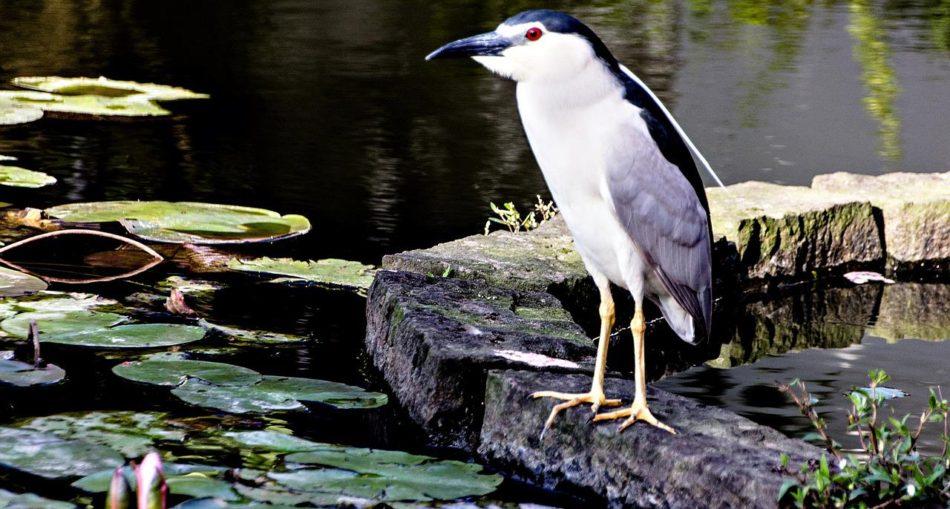The Night Heron is a magnificent bird that prefers hunting at dusk or late into the evening. They might even seem ghostly when they are wadding in the water, stalking their prey. In this article, you will learn all about this stocky, night bird and some interesting facts.
Scientific Classification
Kingdom: Animalia
Phylum: Chordata
Class: Aves
Order: Pelecaniformes
Family: Ardeidae
Genus: Nycticorax
Species: N. Nycticorax
Description
Adults have a white or grey body with a black crown and back, red eyes, and small yellow legs. They have white underparts and pale grey wings. The back of the head has two or three long white plumes that are raised during courtship and welcome displays. Although the males are slightly larger, the sexes look similar. Black-crowned night herons don’t have the conventional heron family body type. Compared to their more well-known cousins, the egrets and “day” herons, they are somewhat stocky and have shorter bills, legs, and necks. They typically have a somewhat slumped posture when at rest, but when hunting, they lengthen their necks and adopt a more wading-bird-like appearance.
Measurements of Night Heron:
- Length: 22.8-26.0 in (58-66 cm)
- Weight: 25.6-35.8 oz (727-1014 g)
- Wingspan: 45.3-46.5 in (115-118 cm)
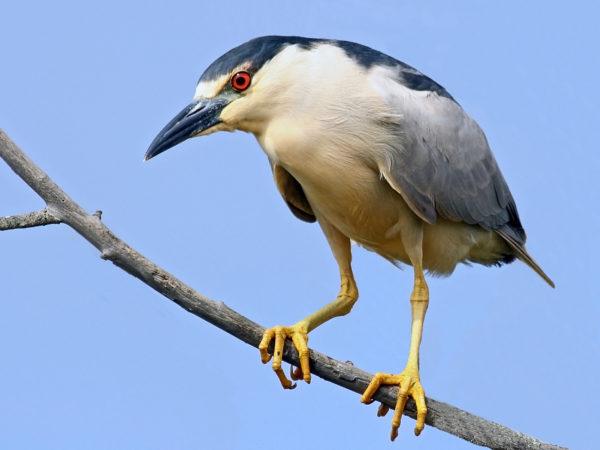
Image of Night Heron. Photo Source: https://commons.wikimedia.org/wiki/File:Black-crowned_Night_Heron_-_flickr.jpg
Habitat
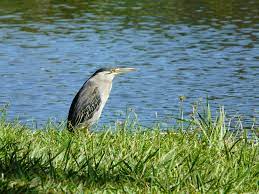
Image of black heron near a pond. Photo Source: https://pxhere.com/en/photo/1126307
The night heron is found in, parts of Europe, Asia, and North and South America. In Australia by marshes, shores; roosts in trees. They are found in a wide variety of aquatic habitats, around both fresh and salt water, including marshes, rivers, ponds, mangrove swamps, tidal flats, canals, and ricefields. Nests in groves of trees, in thickets, or on the ground, usually on islands or above water, perhaps to avoid predators.
Diet
Foraging typically involves standing motionless or moving gently along the edge of shallow water. May perch on pilings, stumps, or small boats above the sea. When breeding or when the weather is unexpected, it also forages throughout the day. It typically forages from dusk until late into the night. Black Herons consume a diet consisting primarily of fish but also include squid, crabs, aquatic insects, frogs, snakes, clams, mussels, rodents, and carrion. occasionally focuses on eggs and young birds.
Take a look at this video of a Night Heron Hunting! – https://www.youtube.com/watch?v=dyzsjf0vd4Ihttps://www.youtube.com/watch?v=q-V0ir5B_EQ
Reproduction
These night herons exhibit a variety of behaviors, including vocal calls, patterned flight, and mate-attraction displays. When two birds decide to mate, insemination takes place after the male mounts the female. The eggs are fertilized inside the female, where they develop until they are ready to be laid.
A clutch contains 1 to 7 pale eggs (the average being 4). Every two days, eggs are laid. The eggs are initially greenish before gradually turning pale blue or green. The eggs are incubated alternately by both parents.
About 24 to 26 days after hatching, the young animals emerge with their eyes open and are only partially clothed in white and grey down. Strangely, Black-crowned Night Herons will happily accept and rear the young of others even though they may not recognize their own young.
The nestlings are initially given partially digested food by the parents before being given complete prey later on. Around two weeks old, the hungry chicks frequently escape the nest and wait outside for their parents to come back for the food.
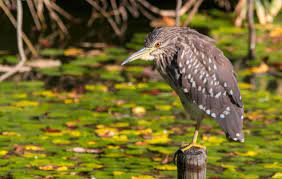
Image of Night Heron Young. Photo Source: https://commons.wikimedia.org/wiki/File:Black-crowned_night_heron_%28young_bird%29,_October_2015,_Osaka.jpg
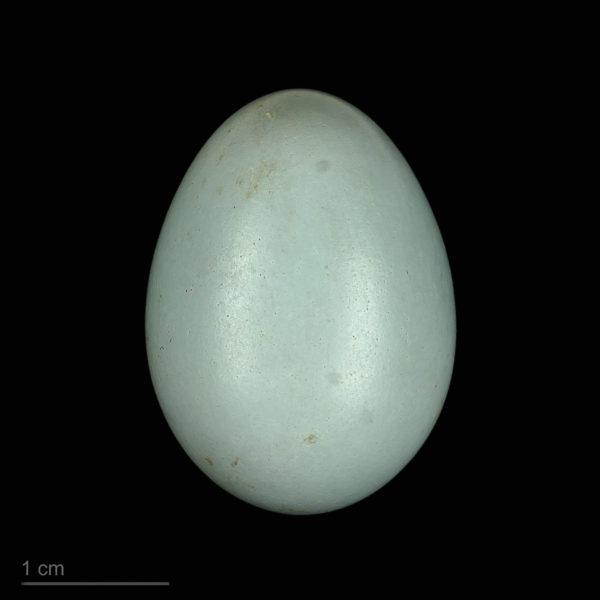
Image of night heron egg. Photo Source: https://commons.wikimedia.org/wiki/File:Coccyzus_erythropthalmus_MHNT.ZOO.2010.11.151.1.jpg
Fun Facts:
- The Black-crowned night heron is also known as the “quark bird” due to the call it makes when flying through the night.
- These birds have digestive acids that are so strong that bones dissolve in their stomachs.
- Black-crowned night herons often nest with other bird species such as ibises, egrets, and other herons. They will even brood the chicks of other species if these are placed in their nests.
- Black-crowned Night Herons live for about 20 years in the wild.
Take a look at this video of the Night Heron call sound – https://www.youtube.com/watch?v=Gj98Mdv_i_g
Night Heron in Japanese Mythology
Aosaginohi (blue Heron Fire) is illustrated by Toriyama Sekien in his Konjaku Gazu Zoku Hyakki. It depicts the Night Heron with a mysteriously illuminated body where the heron transforms into a yokai (Japanese Spirits). The bird is also said to give off a golden powder.
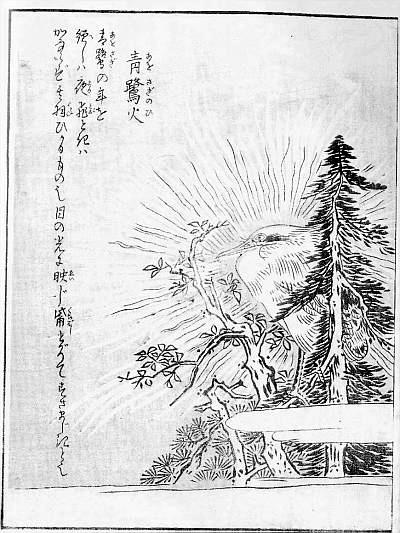
Image of Night Heron in Toriyama Sekien’s Aosaginohi. Photo Source: https://en.wikipedia.org/wiki/Aosaginohi
References:
- https://www.audubon.org/field-guide/bird/black-crowned-night-heron#:~:text=Found%20in%20a%20wide%20variety,water%2C%20perhaps%20to%20avoid%20predators.
- http://bioweb.uwlax.edu/bio203/s2014/murphy_mich/reproduction.htm#:~:text=These%20night%20herons%20use%20several,are%20ready%20to%20be%20laid.
- https://en.wikipedia.org/wiki/Black-crowned_night_heron
- https://animalia.bio/black-crowned-night-heron#:~:text=Fun%20Facts%20for%20Kids&text=The%20Black%2Dcrowned%20night%20heron%20is%20also%20known%20as%20the,water%20to%20create%20a%20disturbance.
- https://en.wikipedia.org/wiki/Konjaku_Gazu_Zoku_Hyakki
- https://www.heronconservation.org/herons-of-the-world/list-of-herons/black-heron/#:~:text=The%20most%20distinctive%20characteristic%20of,nape%20plumes%20completing%20the%20canopy.
Discover more from Things Guyana
Subscribe to get the latest posts sent to your email.

